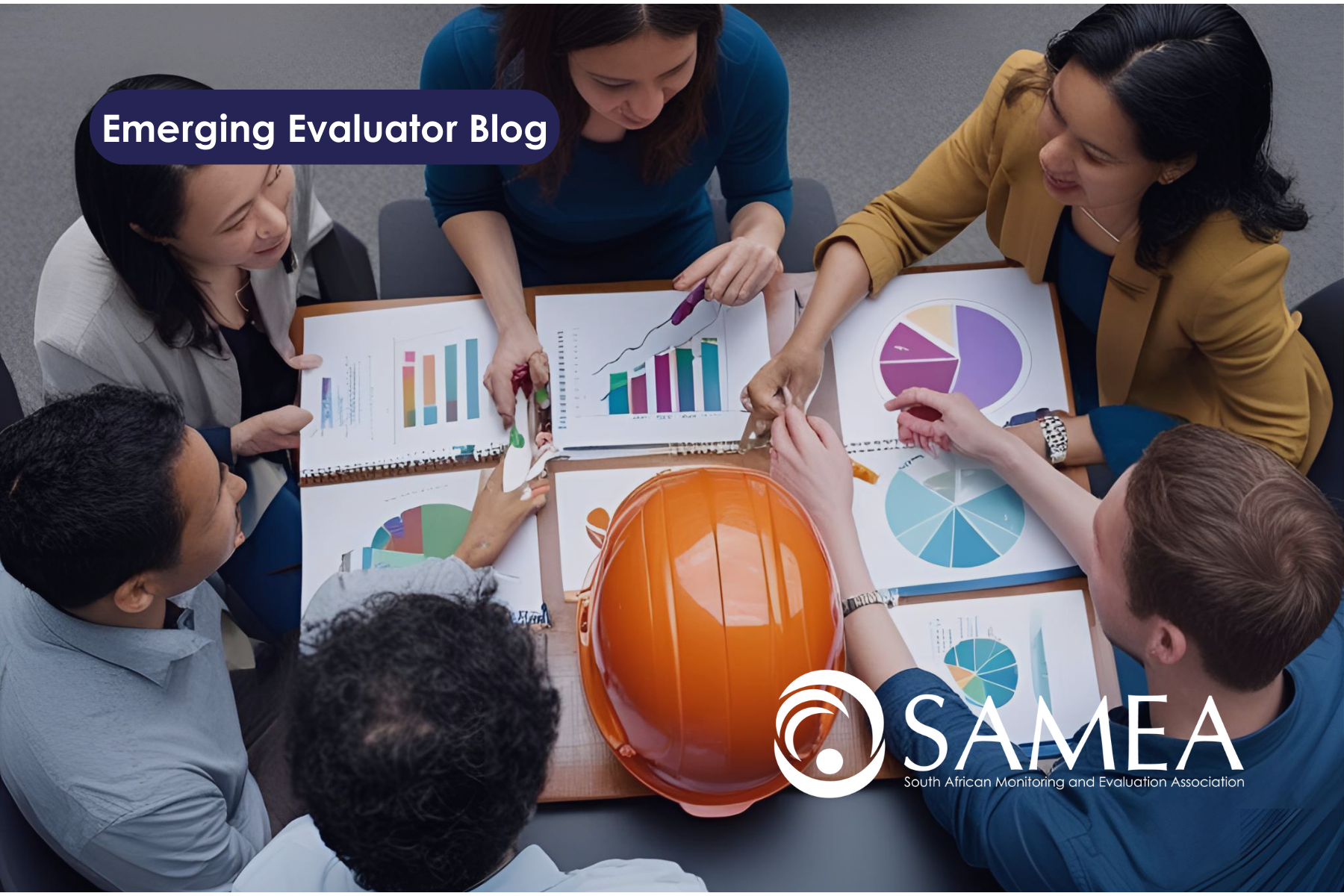Lessons Learnt from the SAMEA Conference: Enhancing Evaluation Practices for Greater Impact

Blog by Debra Mthimkhulu – Emerging Evaluator at SAMEA (2024)
As a Young and Emerging Evaluator in the Monitoring and Evaluation sector, I would like to share some reflections from the recent SAMEA (South African Monitoring and Evaluation Association) 9th Biennial Conference 2024. Attending the event was an enriching experience, reminding me not only of our collective challenges but, more importantly, of the incredible power of shared learning in evaluation and development.
Here are a few key themes and takeaways that stood out to me. I hope they resonate with fellow evaluators and anyone interested in the field.
Key Themes from the Conference
1. The Power of Inclusive Evaluation
The conference highlighted the critical importance of inclusive evaluation. This approach goes beyond merely measuring impact; it empowers those involved throughout the process. Engaging communities directly in evaluations fosters an environment of accountability and respect, amplifies local voices, and upholds ethical standards.
Lesson learnt: Inclusivity is essential for meaningful evaluations. By genuinely incorporating the perspectives of those most affected, evaluations can better capture real experiences and outcomes—making them fairer, more relevant, and more impactful.
2. Innovation in Data Collection
A prominent theme was the innovation in data collection. Resource and time constraints often challenge evaluators in gathering robust data. However, new tools—such as mobile surveys, remote sensing, and AI-powered analytics—are transforming how data is collected, particularly in remote or resource-constrained environments.
Lesson learnt: Embracing technological advancements enhances both the accuracy and efficiency of data collection. These tools are paving the way for more effective and adaptive evaluation practices in today’s evolving landscape.
3. Bridging the Gap Between Data and Decision-Making
Ensuring that data informs real-world decision-making remains a common challenge in evaluation. Several speakers emphasised the importance of data visualisation and clear communication in making findings accessible and actionable.
Lesson learnt: The effective presentation of data is key to driving real impact. Using engaging visuals and concise, clear language makes findings more approachable for policymakers, funders, and community stakeholders. Bridging the data-to-decision gap ensures that good data translates into meaningful action.
Reflecting on this, I have committed to improving how I present my findings as a young, emerging evaluator. By using more engaging visuals and clear, succinct language, I aim to make my work more accessible and impactful in the near future. This focus reminds us that good data alone is not enough—it is about how the data is shared and applied.
Challenges in Crafting this Blog
Synthesising insights from the conference presented its own set of challenges. With such a broad range of topics covered, it was overwhelming to condense everything into concise, practical takeaways. This mirrors a common challenge in evaluation: pinpointing what is most relevant and impactful.
My goal is to apply these lessons to my work and continuously strengthen my approach as a young evaluator. I hope these reflections encourage others in the evaluation field to continuously learn, adapt, and improve their practices.
Looking Ahead
I am eager to bring these themes to life in ways that resonate with other evaluators. My hope is that this reflection not only captures my learning journey from the SAMEA Conference but also offers practical insights for others facing similar challenges in their evaluation work.
Thank you for joining me on this journey—and here’s to continuous learning and improvement in the field of evaluation!
Most Recent Read
Discover more topics
